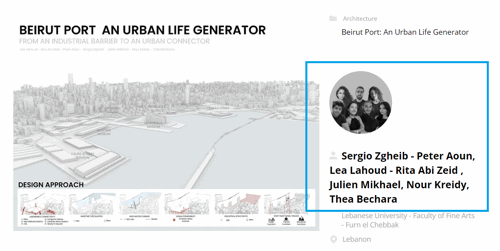Camperdown Contemporary Wood School

Idea projektu
Situated on the northwest edge of Dundee, Camperdown Country Park covers an area of over 400 acres and is home to no fewer than 190 species of trees. This semi-rural landscape marks the transition from an outer extent of the city containing both industrial and residential areas. The park is popular among locals and visitors alike offering year-round access to a wide range of public activities and events.
This project is for an architectural design proposal for a Contemporary Wood School located in Camperdown Country Park, Dundee. The proposal prioritises tectonic issues in construction, order and expression, demonstrating a continuing commitment to rural industries, timber materials, timber processing, and the pursuit of innovative timber techniques and technologies at the forefront of sustainable design. Visitors and people working and studying in the building will come to understand the multiplicity of possibilities that this beautiful material has to offer through a design which acts as a demonstrator, presenting didactic examples of innovative structural forms for the carpentry students who train there.
The proposal seeks to embed itself within the context of Camperdown Park, creating a warm and welcoming atmosphere for both the carpentry students and the wider community.
Popis projektu
Responding to the linear axis between the central tree within the site, and Camperdown House to the east of the site, the proposal is split into two key volumes with the public, housing the cafe and exhibition space, on this axis of movement and the private, housing the education and workshop spaces, set back affording it more privacy within the site. This presented the opportunity to open up the south facades to key views over the River Tay whilst creating a south facing entrance courtyard and north facing, concealed, service zone.
The internal rhythmic expression of the glulam portal structure further emphasises this axis, meanwhile the 'joint' between the two volumes is expressed within the exhibition space, taking influence from the idea of an expressive interlocking of forms found in Japanese carpentry. The 'joint' has been raised above the ground level, illuminated from above, and its interlocking forms exaggerated as an exhibition of the building's timber structure and focus. Furthermore feeding into the conceptual arrangement of the plans whose served and servant spaces interlock centrally within the exhibition space.
Through critical regionalist principles, the proposal seeks to be a contemporary design which is rooted in its place. The gable is defined taking influence from Camperdown Sawmill's human scale, whilst the materiality responds to the tones and textures found in the local context. The facade is pulled back on the south to create a covered loggia, blurring the boundaries between inside and outside whilst providing summer shading and ventilation. This axis is extended to form the wider landscape strategy and processional route through the site, anchored by a dry stone wall which embeds the design within the site and provides informal seating. Wildflowers and native long grasses give the site back to nature, creating a habitat for birds and bees, orchard trees provide a soft boundary between the pedestrian path and vehicular service track, and the rain garden reduces waterlogging and flooding following heavy rain.
Technické informace
The design is constructed from a glulam portal frame structure. The external envelope consists of a timber frame filled with sisal wool insulation, clad in either Scottish Larch timber rainscreen cladding, or powder-coated corrugated aluminum rainscreen cladding.




